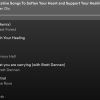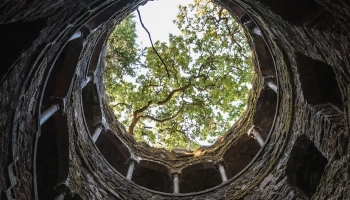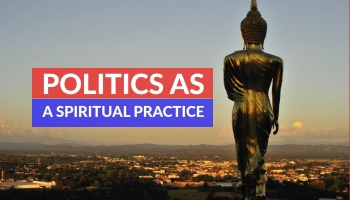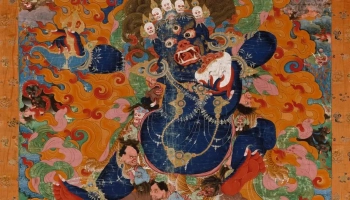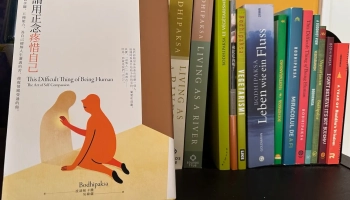
[ad_1]

Over the holiday, I was visiting family in North Georgia. We were there during the Winter Solstice.
And as you may know, on that day we mark the longest night of the year. Indigenous cultures the world over have celebrated the occasion with ceremony and ritual for millenia.
When my family and I were visiting Stonehenge in England this past July, we learned that the Winter Solstice is the biggest annual event there, when pagan pilgrims come to recognize and honor the “rebirth” of the sun for the new year.
And that’s what we did in Georgia.
A Solstice Burning Ceremony
One cold and windy night, my family gathered around the fire to do a burning ceremony in honor of the sun’s return.
But also, to honor the fruitful darkness.
We each wrote on small strips of paper those things we wanted and needed to let go of: hurt feelings, lingering grudges, toxic relationships, and other wounds and baggage we’d collected throughout the year.
Then we went around the circle and tossed our little paper prayers into the fire, burning each strip one by one. And we set our intention on freeing ourselves from these emotional anchors to make room for and give birth to whatever’s next.
It was a ritual act of letting go. Not unlike the implicit ritual of letting go that we exercise when we sit down in meditation.
Finding Wholeness In The Light And The Dark
But what I love about the solstice is the explicit conjunction of light and dark. You don’t think about one without the other. All of us, in our darkness and pain, are shepherds of the light.
Of course, most of us want the light and try to avoid the dark. But as clinical psychologist Dr. Steven Hays so eloquently puts it in his essay, From Loss to Love, “to open your heart to pain is to open your heart to joy.”
And that wonderful Pixar movie “Inside Out” captures the same poignant dynamic with its central revelation…when the character Joy realizes that her human, Rylee, can’t truly be happy without embracing Joy’s antagonist, the always blue “Sadness.”
One doesn’t exist without the other. Our human wholeness depends upon a balance of both.
The Restorative Spirit of Darkness
As we embark on the New Year ahead, yes, let’s celebrate the coming of the light. But the dark days are still long. And before we rush to embrace the light, let’s not forget that we find our wholeness in the fertile—and often challenging—darkness too.
To this end, allow me to share a poem. An ode to the redemptive, restorative, revelatory, and resurgent spirit of darkness.
And if you’re feeling particularly mired in the darkness, please know that you are never alone. Help is always available.
In Celebration of the Winter Solstice
By Stephanie NobleDo not be afraid of the darkness.
Dark is the rich fertile earth
that cradles the seed, nourishing growth.
Dark is the soft night that cradles us to rest.
Only in darkness
can stars shine across the vastness of space.
Only in darkness
is the moon’s dance so clear.
There is mystery woven in the dark quiet hours.
There is magic in the darkness.Do not be afraid.
We are born of this magic.
It fills our dreams
that root, unravel and reweave themselves
in the shelter of the deep dark night.
The dark has its own hue,
its own resonance, its own breath.
It fills our soul,
not with despair, but with promise.
Dark is the gestation of our deep and knowing self.
Dark is the cave where we rest and renew our soul.
We are born of the darkness,
and each night we return
to the deep moist womb of our beginnings.Do not be afraid of the darkness,
for in the depth of that very darkness
comes a first glimpse of our own light,
the pure inner light of love and knowing.
As it glows and grows, the darkness recedes.
As we shed our light, we shed our fear,
and revel in the wonder of all that is revealed.So, do not rush the coming of the sun.
Do not crave the lengthening of the day.
Celebrate the darkness.
Here and now. A time of richness. A time of joy.
[ad_2]
Source link


